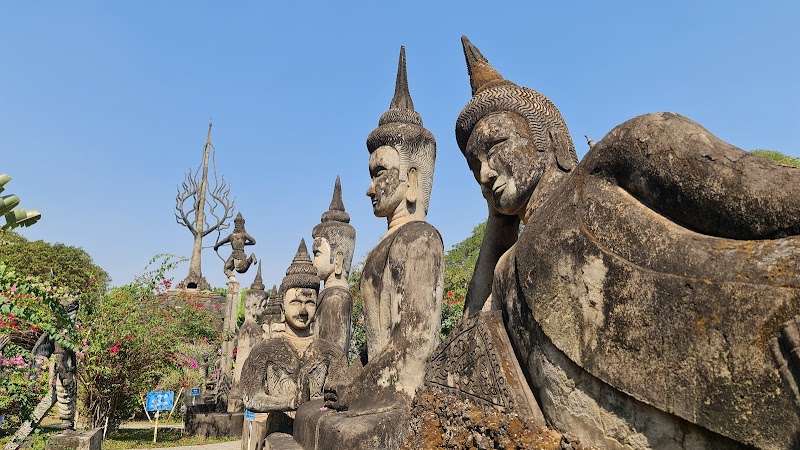Kayaking the Mekong River at sunset near Vientiane offers a unique blend of calm adventure and cultural immersion. Paddle through changing waters, vibrant wildlife, and riverside communities as the sky transforms, making it a perfect activity for both novices and experienced paddlers.
Launch Early for Light
Start your paddle about 90 minutes before sunset to enjoy the full spectrum of colors and ensure a safe return before dark.
Bring Two Forms of Light
Carry a waterproof flashlight and a headlamp to navigate safely as dusk fades into night on the river.
Wear Quick-Dry Clothing
Lightweight, moisture-wicking layers protect you from evening chills and accidental splashes while keeping comfort high.
Stay Hydrated
Evening paddles can be deceptively dehydrating; bring enough water to stay refreshed and alert throughout the trip.
Sunset Kayaking on the Mekong: Glide through Vientiane’s Golden Hour
As the sun leans toward the horizon, the Mekong River near Vientiane awakens with a calm yet restless energy. Taking to a kayak at this time means engaging directly with a river that’s fiercely itself—sometimes gentle and reflective, other times brushing against you with lively ripples that dare you to push forward.
Starting from the calmer shores just outside Vientiane's urban sprawl, your kayak carves a smooth path along slowly changing waters that catch each ray of dwindling daylight. The riverbanks shift from vibrant green farmland to quiet stony beaches, with small fishing villages watching quietly as you glide past. The air cools, carrying scents of wet earth and blossoming lotus flowers, while birds prepare for the night’s rest.
This route usually spans 8-12 kilometers depending on your chosen launch point and tide conditions, making it ideal for a 2-3 hour paddle that suits both first-timers and seasoned paddlers. The current works with you most of the way, coaxing your kayak forward, though moments of mild swells demand steady hands and attention. A sunset paddle here isn’t just a visual wonder but a practical chance to understand the river’s changing mood through the day.
Practically, timing is everything. Launch about 90 minutes before sunset to catch the full unfolding of colors—the sky turns fiery orange, soft pinks, then deep purples. Bring a waterproof light and a whistle for safety as twilight thickens, and pack a lightweight, quick-dry jacket to guard against sudden evening chills or river spray. Hydration is essential; the tropical heat can drain your energy even as the evening approaches.
Navigating the Mekong at dusk means respect—respect for the river’s unpredictable moods and for the communities along its banks. Local fishermen still cast nets and call out to each other in fading light, inviting travelers into a shared rhythm of work and nature. The challenge is subtle but real: maintaining balance between immersion and safety, understanding this waterway’s pulse rather than forcing it.
Sunset kayaking here offers more than just an adventure—it’s a practical lesson in listening to the environment, balancing your energy with the current, and witnessing Vientiane from a perspective the city itself can’t reveal. It’s an invitation to paddle alongside a living river that moves with its own fierce grace, rewarding those who approach it with both enthusiasm and care.
Nearby Trips
All Adventures
Boat Charters
Water Activities
Adventures near Vientiane
Discover the unique and memorable adventures that make Vientiane special.
Frequently Asked Questions
Is kayaking on the Mekong at sunset safe for beginners?
Yes, with basic kayaking skills and proper preparation, beginners can enjoy the calm sections near Vientiane. Guided tours are recommended to navigate currents safely and handle unexpected conditions.
What wildlife might I see while kayaking near Vientiane?
You can spot river dolphins occasionally, kingfishers darting along the banks, and various water birds settling for the night. The riverside flora often attracts small mammals and insects.
How do I book a kayaking trip on the Mekong in Vientiane?
Several local outfitters and eco-tour operators offer sunset kayaking tours. Booking in advance through reputable agencies ensures safety equipment and knowledgeable guides.
What should I wear while kayaking on the Mekong at sunset?
Dress in quick-dry, lightweight layers with sun protection for early paddling, and bring a light jacket for cooler post-sunset temperatures.
Are there any restrictions or permits needed for kayaking here?
Generally, no formal permits are required for recreational kayaking near Vientiane, but respecting local fishing zones and protected areas is important to avoid conflicts.
Can I bring my own kayak or do I have to rent?
Bringing your own kayak is possible but challenging due to transport logistics. Most visitors opt to rent from local operators who provide boats suited for river conditions.
Recommended Gear
Lightweight Quick-Dry Jacket
Protects from evening chill and wind spray after sunset without overheating.
Waterproof Headlamp
Ensures visibility during low light hours and signals your position on the water.
Reusable Water Bottle
Hydration is crucial; carry enough water to avoid fatigue and dehydration.
Sun Protection Hat
Blocks the strong afternoon sun before sunset, reducing sunburn risk during prep and launch.
Local Insights
Hidden Gems
- "Small rocky islets near Tha Heua village provide surprising spots to pause and watch fishermen at work"
- "The downstream bend by Phou Khao Khouay National Park offers glimpses of river dolphins at dusk"
Wildlife
- "The endangered Irrawaddy dolphin occasionally surfaces in calmer stretches"
- "Kingfishers, herons, and hornbills are common sights during sunset"
History
"The Mekong River has long been a critical trade artery and cultural boundary in Lao history. Vientiane’s riverside communities reflect centuries of fishing, boat-building, and river worship traditions that remain alive today."

